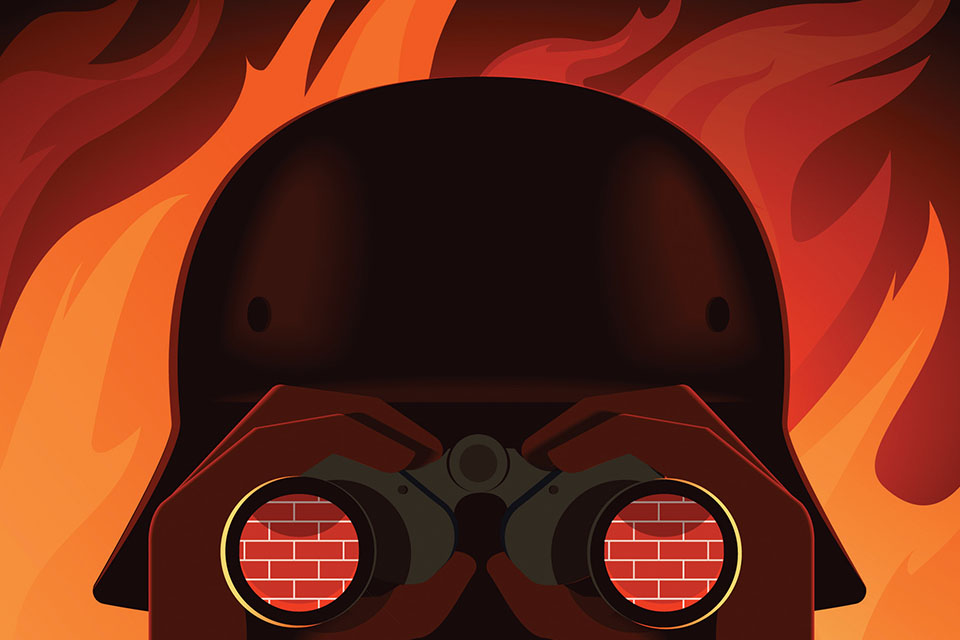[dropcap]S[/dropcap]ometimes you know you should stop. You’ve just eaten an exquisite, filling dish. You’re already slowing down, starting to feel full. But you just can’t help yourself.
You ask for seconds.
That’s a good way to think about the wartime strategies of Nazi Germany and Imperial Japan in 1941. On the surface, their wars were going well. Germany had overrun Poland, Scandinavia, Western Europe, and the Balkans. Likewise, Japanese armies had seized the wealthy Chinese province of Manchuria and were driving into the Chinese heartland, bent on total conquest.
While it looks like the meal is off to a great start, however, both powers are starting to feel a bit queasy. For Hitler, things begin to fall apart in fall 1940, with the Battle of Britain. Despite all their victories, the Germans have not been able to seal the deal and bring Great Britain to the negotiating table. Not only do the British survive the onslaught, they also produce an aggressive, determined wartime leader in Prime Minister Winston Churchill, a man who openly declares, “We will never surrender.” Hitler has based his plans on a short, sharp war and an early victory, but now faces the prospect of a drawn-out conflict—one for which he is unprepared militarily and economically. Britain has an empire and, despite its defeats, still controls a major portion of the world’s oceans and resources. Hitler’s nightmare is what happened back in 1918, when a long war propelled Germany into a revolution that overthrew the Kaiser. “Never again will there be a November 1918,” Hitler declared at the war’s start in 1939—but now things are starting to get real.
Or take the Japanese. They expect a quick victory in China. Chiang Kai-shek’s regime is corrupt and weak, and is already engaged in a full-scale civil war with Communist rebels in the countryside under Mao Tse-tung. What looks to be a pushover is anything but, however. Japan’s invasion unifies the Chinese. Chiang’s forces give ground grudgingly, retreating slowly into the vast Chinese interior and setting up a new western capital at Chungking. Chiang also suspends his civil war with Mao in favor of a “united front.” Foreign supplies begin to flow into China, with arms from Britain and the U.S. arriving via a new route hacked out of the mountains, the famous Burma Road. U.S. fliers also play a role, with the American Volunteer Group (better known as the Flying Tigers) contesting Japanese control of the air. By 1941, Japan’s campaign in China has stalemated. Much of the vast Asian mainland is in Japanese hands, but even with a troop commitment of a million men, Japan is no closer to ultimate victory.
Germany stymied by Great Britain; Japan stalemated in China. And what do they both decide to do?
They ask for seconds.
For Germany, it is the foolhardy decision to launch Operation Barbarossa, the invasion of the Soviet Union. For the Japanese, the lightning strike against the U.S. at Pearl Harbor. Both are high-stakes gambles against much larger adversaries. The Germans are wagering that they can destroy the Red Army along the border before it has a chance to re-treat into the Russian interior. The Japanese are betting that they can wipe out the U.S. Pacific Fleet in a single surprise blow.
It’s curious: both countries decide to widen wars that they believe have already gone bad, and in the process both add a new and gigantic enemy to the list of those they are already having trouble beating. “We cannot win the war we’re fighting,” both seem to be saying, “but perhaps we can win a bigger one.”
Both decisions will end badly, of course. Maybe, in such cases, it’s best to push yourself away from the table and say, “I’m done.” ✯





